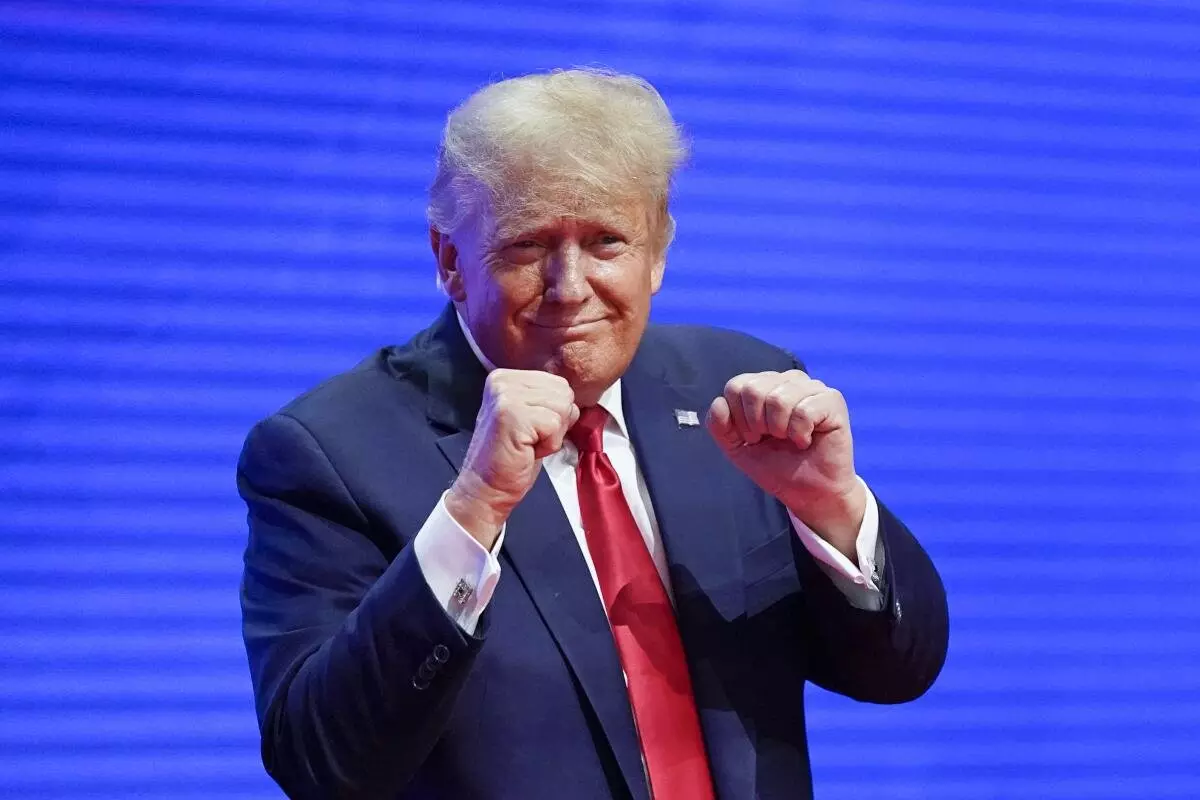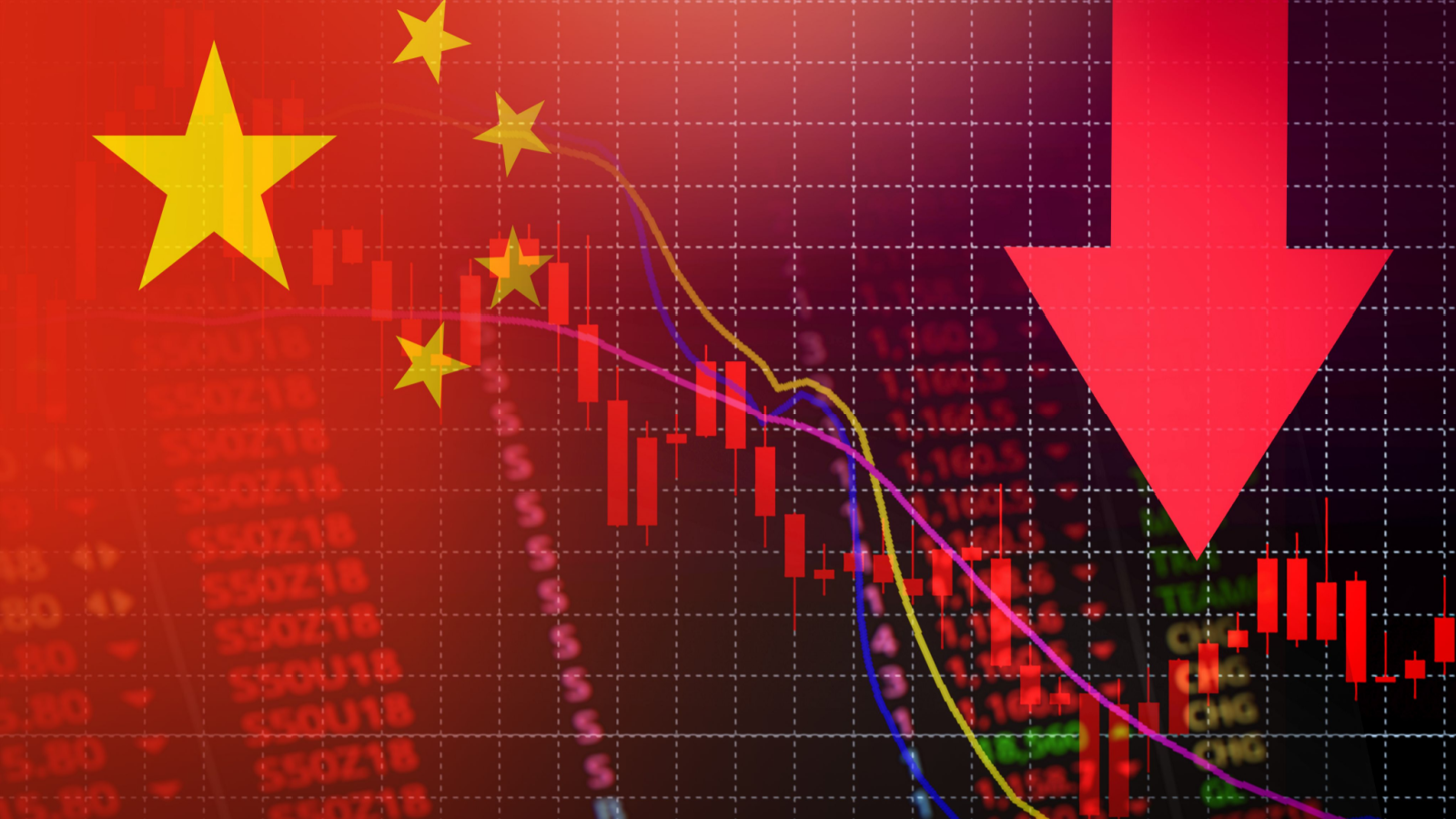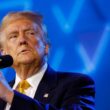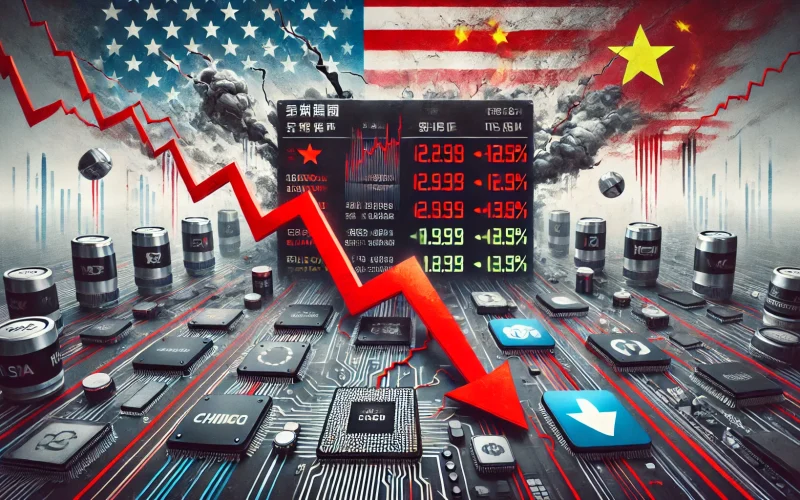Chinese Stocks Slump Amid Weak Tech Earnings, Geopolitical Tensions, and Anticipated Trump Sanctions
Chinese equities are experiencing a significant downturn as investors grapple with disappointing corporate earnings, intensifying U.S.-China tensions, and fears of upcoming sanctions under the anticipated policies of U.S. President-elect Donald Trump. The Hang Seng China Enterprises Index (HSCEI) fell over 3% recently, with broader mainland indices like the CSI 300 also recording substantial losses. Compounding these challenges are economic indicators pointing to a slowing recovery in China and limited domestic policy interventions.
This article delves into the factors driving the slump, the role of potential U.S. sanctions, and the implications for China’s economy and global financial markets.
Market Snapshot: Declines Across Key Indices
The recent sell-off in Chinese stocks highlights deepening investor pessimism. The HSCEI suffered its sharpest single-day drop in a month, while the Shanghai Composite Index and CSI 300 both recorded losses nearing 2%. Meanwhile, the yuan weakened to a three-month low against the dollar, reflecting broader concerns about economic instability.

Key Drivers of the Market Slump
1. Weak Earnings from Tech Giants
China’s technology sector, once a major growth driver, is under pressure from both domestic and international challenges:
- Regulatory Crackdown: Beijing’s stringent policies on monopolistic practices and data security have constrained companies like Tencent, Alibaba, and Baidu.
- Export Restrictions: The U.S. has expanded bans on semiconductor exports to China, limiting access to critical technologies and disrupting growth in AI and chip manufacturing.
- Earnings Disappointments: Several tech firms reported lower-than-expected profits for Q3 2024, further rattling investor confidence.
The NASDAQ Golden Dragon China Index, which tracks Chinese firms listed in the U.S., also reflects these challenges, declining by over 10% in recent weeks.
2. Geopolitical Tensions Escalate
The election of Donald Trump has reignited fears of heightened trade and economic confrontation between the U.S. and China. Reports suggest that Trump’s incoming administration plans to:
- Reintroduce tariffs on Chinese imports.
- Expand sanctions targeting Chinese technology firms, particularly those linked to AI and military applications.
- Restrict American investment in Chinese tech startups and state-linked enterprises.
Such measures, if enacted, could exacerbate existing pressures on China’s export-driven economy and further alienate global investors.
3. Sluggish Domestic Economic Recovery
China’s economic rebound from pandemic-era lockdowns has been slower than anticipated. Key issues include:
- Weak Consumer Demand: Despite modest tax cuts and subsidies, household spending remains subdued.
- Property Market Woes: Efforts to stabilize the housing market have fallen short, with real estate sales and construction activity remaining low.
- Insufficient Stimulus: Beijing’s reluctance to implement large-scale fiscal measures has disappointed investors seeking stronger economic support.

Anticipated Trump Sanctions: A Looming Threat
Policy Outlook Under Trump
Donald Trump’s return to the White House signals a likely revival of hardline policies on China. Key anticipated actions include:
- Expansion of Trade Tariffs: Trump’s earlier tariffs covered $370 billion worth of Chinese goods; analysts predict this could rise further under his administration.
- Investment Bans: Restrictions on U.S. investment in Chinese firms, especially those in technology and defense sectors, may intensify.
- Decoupling Efforts: Policies aimed at reducing U.S. reliance on Chinese supply chains could hurt exports and foreign investment in China.
Potential Impact on Chinese Markets
If these policies are enacted, the ripple effects could include:
- Further depreciation of the yuan.
- Heightened outflows of foreign capital from Chinese markets.
- Increased volatility in sectors heavily reliant on international trade, such as technology and manufacturing.

.
Sectoral Impacts
Technology and Innovation
China’s tech sector stands to lose the most from U.S. sanctions, particularly if export controls on advanced chips are tightened. Companies heavily reliant on foreign components may face production bottlenecks and declining competitiveness.
Real Estate and Construction
The property market, already struggling with weak consumer demand and high debt levels, could suffer further as geopolitical tensions dampen investor confidence.
Financial Services
Chinese banks and asset managers are contending with rising bad loans and tighter margins, challenges that could be exacerbated by capital outflows driven by geopolitical uncertainties.

Global Implications of China’s Market Struggles
1. Ripple Effects on Emerging Markets
Chinese equities are a bellwether for many emerging markets, which could see increased volatility as a result of China’s struggles.
2. Supply Chain Disruptions
Further decoupling between the U.S. and China may disrupt global supply chains, particularly in technology and consumer electronics.
3. Shifts in Investment Flows
Global investors are likely to reassess their exposure to Chinese markets, redirecting capital to less volatile regions such as Southeast Asia or India.

What Lies Ahead for Chinese Markets?
Short-Term Outlook
- Continued Volatility: Weak earnings, geopolitical risks, and economic uncertainty will likely sustain market turbulence in the coming months.
- Policy Adjustments: Investors will closely monitor Beijing’s response, including potential monetary easing or fiscal stimulus.
Long-Term Prospects
While immediate challenges persist, China’s large consumer base and industrial capacity position it for recovery in the long term. However, effective policymaking and improved international relations will be crucial.
Conclusion: A Pivotal Moment for China
The confluence of weak tech earnings, geopolitical tensions, and anticipated U.S. sanctions presents a critical test for China’s financial markets and policymakers. As the world’s second-largest economy, China’s stability and growth are integral to global economic health. The coming months will determine whether Beijing can effectively navigate these challenges and restore investor confidence.









